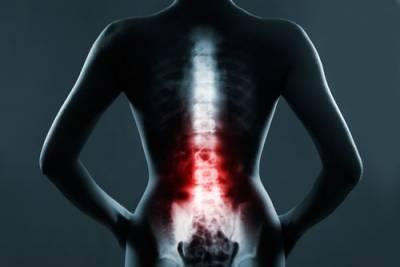What Are the Different Types of Spinal Cord Injuries?
 Many different types of personal injuries can affect someone’s health, their ability to work and complete daily functions, and their overall well-being. Spinal cord injuries are some of the most serious types of harm that a victim can experience, and they can occur in car accidents, slip and fall accidents, construction accidents, and many other situations. Injuries that affect the back and spine can be very painful, leading to restrictions to a person’s mobility and the activities they can perform at work or in their personal lives. In the most serious cases, a person will experience paralysis, and they may be permanently disabled. Victims can work with an attorney to understand the full effects of a spine injury and pursue compensation from the parties who were responsible.
Many different types of personal injuries can affect someone’s health, their ability to work and complete daily functions, and their overall well-being. Spinal cord injuries are some of the most serious types of harm that a victim can experience, and they can occur in car accidents, slip and fall accidents, construction accidents, and many other situations. Injuries that affect the back and spine can be very painful, leading to restrictions to a person’s mobility and the activities they can perform at work or in their personal lives. In the most serious cases, a person will experience paralysis, and they may be permanently disabled. Victims can work with an attorney to understand the full effects of a spine injury and pursue compensation from the parties who were responsible.
Injuries to Different Levels of the Spine
The spinal cord is a key part of the central nervous system, and it transmits nerve impulses from the brain to other parts of the body. Damage to the nerves in the spinal cord will disrupt the nervous system’s ability to transmit these messages, and this can result in a partial loss of sensation or function or complete paralysis. The parts of the body affected will depend on the level of the spine where an injury occurred. These injuries may be grouped into four basic categories:
-
Neck injuries - Whiplash, an impact to the neck, or a jolting or twisting of the head and neck may cause damage to the cervical spine. These injuries may result in quadriplegia or tetraplegia, in which a person will suffer paralysis in their arms, legs, and torso. In some cases, a person may be unable to breathe without assistance, and their ability to speak may also be affected.
-
Upper back injuries - Injuries that damage the thoracic vertebrae will often result in paralysis of the legs and lower body. Parts of the upper body may also be affected, such as the abdominal and back muscles and parts of the arms.
-
Lower back injuries - Injuries to the lumbar spine will often result in partial paralysis in the legs and hips. While a person may retain some function and be able to walk with assistance, they may lose voluntary control of their bowels and bladder.
-
Tailbone injuries - An injury to the sacral vertebrae at the bottom of the spine may affect the hips, buttocks, groin, and thighs. A victim may still be able to walk, but they may lose some control of their bladder and bowels.
Contact Our Champaign, IL Spine Injury Attorneys
A spine injury can have drastic effects on a person’s ability to work, care for themselves, and complete daily tasks. At Kanoski Bresney, we work with injury victims to help them pursue financial compensation from those who were responsible for their injuries. If you have been injured, we will work to make sure you will have the financial resources you need during your recovery. Contact our Peoria spinal cord injury lawyers at 888-826-8682 to set up a free consultation today.
Sources:
https://www.shepherd.org/patient-programs/spinal-cord-injury/levels-and-types
https://www.mayoclinic.org/diseases-conditions/spinal-cord-injury/symptoms-causes/syc-20377890









